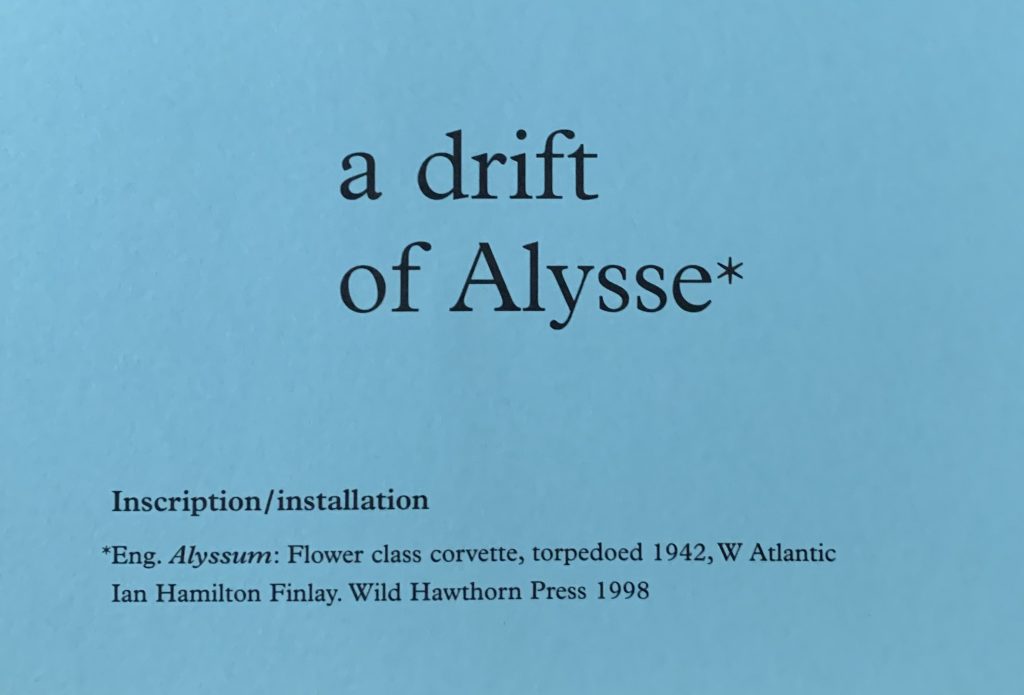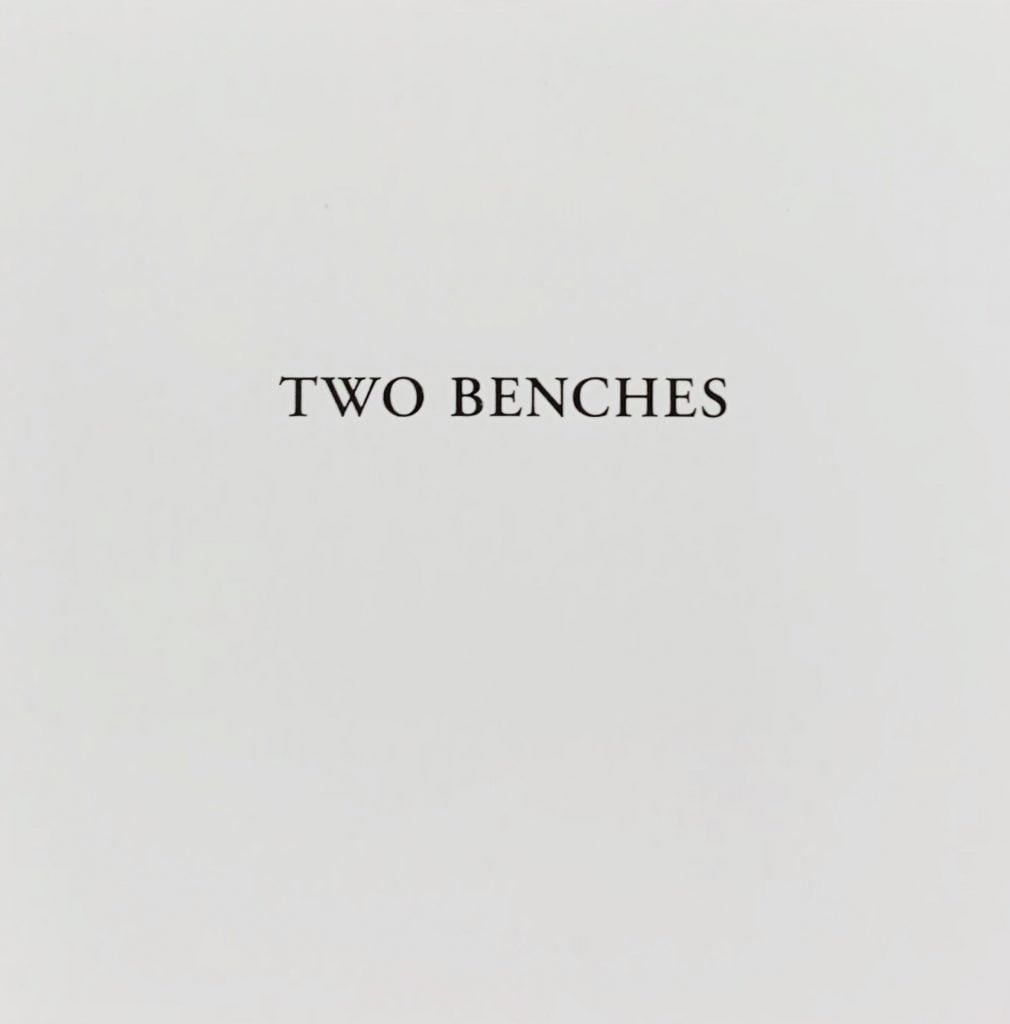DATING THE NAVY. 1998.
Little Sparta: Wild Hawthorn Press, 1998
12.5 x 14.5cm, 2pp artist's card with the image in red being of a Japanese airplane - on the back of the card Finlay notes that the Allies used the term "Vals" as code for the Aichi Navy Type 99 Carrier Bomber. Finlay uses the word "date" to refer to the attack on Pearl harbour on an exact day - "December 7, 1944". VG+.
SWALLOW. 1998.
Little Sparta: Wild Hawthorn Press, 1998
15.1 x 11.5cm, 2pp artist's card with a typographic treatment by Peter Coates of a Finlay poem which has the Greek word for swallow as its title. The angular and sharp elements of the type reflect the wing tips (and to some extent the speed) of the ever moving birds.
SHRILL
TWITTER
SHARP
LITTLE
WINGS
The poem notes not just the sharpness of the wings but also the sharpness of the sound the bird makes. This work was also issued as a print by Finlay. VG+.
EVERY EFFECT… 1998
Little Sparta: Wild Hawthorn Press, 1998
12.7 x 10.2cm, 4pp artist's card with line drawing by Gary Hincks of a sail-like geometric shape. Below the shape is a quotation from Proclus "Elements of Theology":
Every effect remains in its cause, proceeds from it, and reverts upon it.
Despite being in a book that purported to be about theology this is an early statement about physics and causality. A causality (from wind) which a sail would very much experience to in turn cause movement in a boat. VG+.
FOR ‘LEMONS’ READ ‘ZULU’. 1998.
Little Sparta: Wild Hawthorn Press, 1998
12.7 x 10.2cm, 4pp (gatefold) artist's card with the text "for 'lemons' read 'zulu'" in the middle panel. This is a work based on an earlier poem by Thomas A Clark which reads "for yellow read lemon"
Finlay regularly in his work denotes lemons as symbolically (due to shape) representing boats and here he makes it more specific and notes the type of boat (a zulu). The representation of the colour yellow from Clark is now representing a type of boat by extension. VG+.
FACT CARD 1. 1998.
Little Sparta: Wild Hawthorn Press, 1998
9.7 x 152cm, 2pp card printed black on deep green. The "fact" revealed on the card is that "over 200 Flowers served as convoy escorts in WW2" - again referring to the Flower Class of corvettes that were used in the war as protection for the merchant navy bringing supplies from the USA to Britain. VG+.
A LAST WORD: RUDDER. 1999.
Little Sparta: Wild Hawthorn Press, 1999
12.5 x 9cm, 4pp card printed red on white. A line art drawing of rudder by Gary Hincks has the text: "A last word: Rudder" on the steering handle.
A rudder is, of course, the last element of a boat and, in terms of being the part that causes the direction of the vessel, also has 'the last word". VG+.
FLOWER STEM (1). 1999.
Little Sparta: Wild Hawthorn Press, 1999
33.8 x 11.3cm, 4pp card printed black on white with a drawing of the front of a boat with a Plimsel line which ascends to the number XIX by Jo Hincks. Finlay notes the resemblance of the shape of the front of a boat to a stalk of a flower. This is the first of two cards which have the same image and text - the only difference being size. VG+.
FLOWER STEM (2). 1999.
Little Sparta: Wild Hawthorn Press, 1999
18.5 x 6.4cm, 4pp card printed black on white with a drawing of the front of a boat with a Plimsel line which ascends to the number XIX by Jo Hincks. Finlay notes the resemblance of the shape of the front of a boat to a stalk of a flower. This is the second of two cards which have the same image and text - the only difference being size. VG+.
AN APPRECIATION OF THE RN FLOWERS. 1999.
Little Sparta: Wild Hawthorn Press, 1999
7.6 x 12.6cm, 2pp card printed black on grey. Finlay's text is a one word poem:
An Appreciation of the RN Flowers
Perennials
The use of Perennials - a plant that comes out every year reminds us of the annual commemorations for those who fought in our wars. VG+.
ILLUSTRATIONS. 1999.
Little Sparta: Wild Hawthorn Press, 1999
10 x 12.5cm, 2pp card printed black on light blue. Finlay lists nine of the Flower Class Corvettes that served in the Battle of the Atlantic as if they were a calendar - they are ordered in the months that they first sailed after completion. The list is also reminiscent of how the French revolutionary calendar renamed months after objects. VG+.











